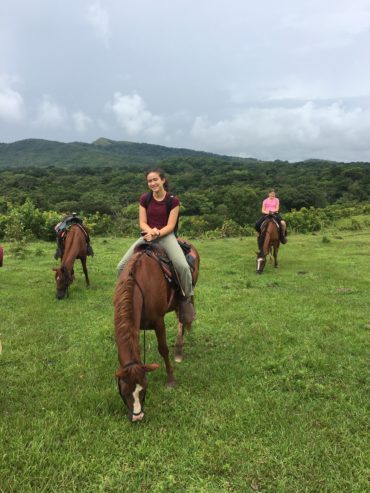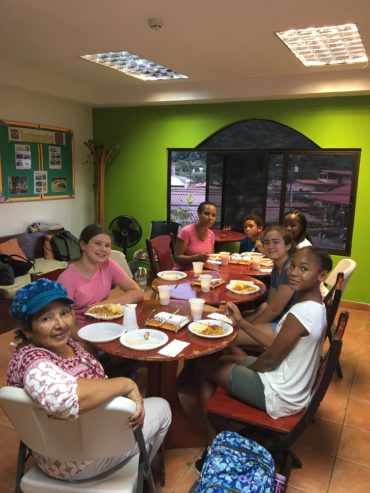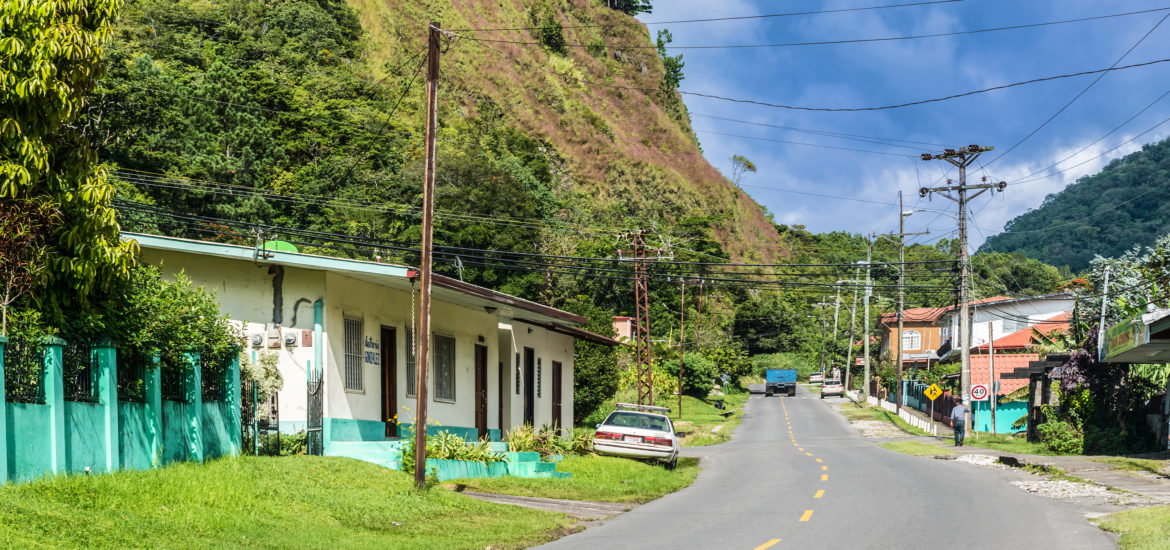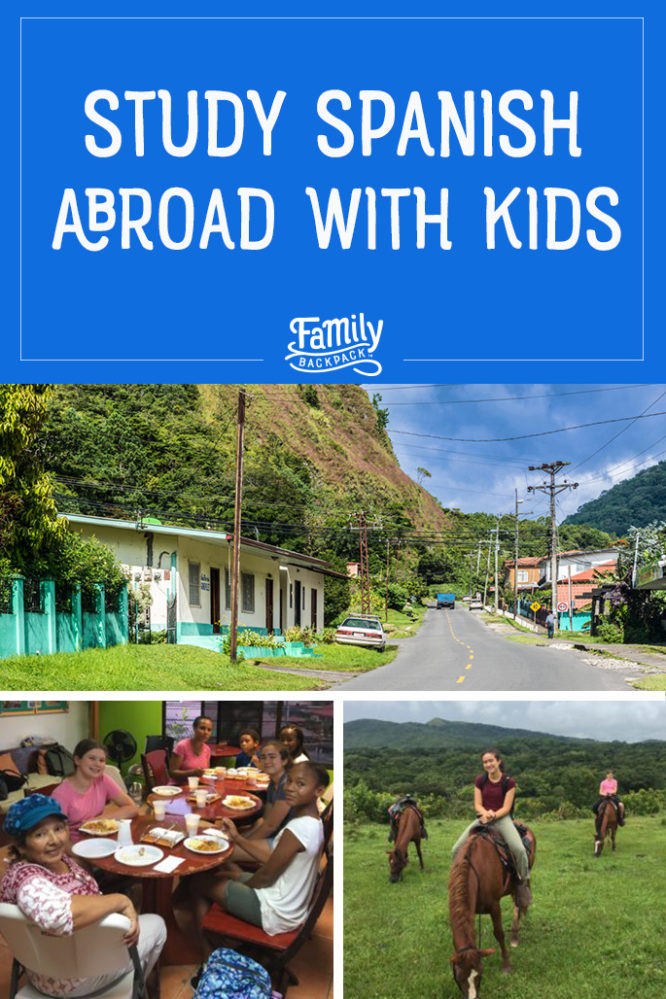Growing up bilingual is a distinct advantage in a global economy, and many parents want their kids to speak more than their native language. Study after study shows how beneficial another language is for brain development, opening up new neural pathways and cultivating nimble-thinking world citizens. According to the experts, simply speak a non-native language to your kids from birth and voilà! They will be working on their third language by kindergarten.
I know families like this. We are not one of them. I have mediocre conversational Spanish and my husband is fluent. We tried. We really tried. But when my toddler was about to fall down the stairs, I didn’t stop to ponder the command form of the verb to stop. And after my husband returned from a long day of work, he really did not want to be the language police, introducing a second language to toddlers at the crabbiest time of the day. So we gave up.
But it is never too late to learn! After my kids, ages 12 and 14, had a year or two of school Spanish under their belts we flew to Panama for a week of immersion Spanish at Habla Ya in Boquete.
Studying in a Spanish-speaking country is SO much better than studying at home. From a language perspective, you are surrounded by Spanish and get to instantly use what you learn. You quickly develop an ear for the language, passively absorbing vocabulary and phrases as you go about your day. Being forced to conjugate that verb in order to eat at a restaurant is a huge motivator, and your skills develop so much faster with the constant ability to practice.
Then there is the cost. Paying for a private Spanish tutor in the US can cost $50 per hour or more. Group classes are less expensive, but with one class a week it can take years to advance to a conversational level. In a Spanish-speaking country, instruction often costs a fraction of lessons at home. Of course, there are travel costs to consider, but if you can minimize airfare (finding a deal, using miles) and lodging (staying with a host family or inexpensive accommodations) then you have both a lifelong skill and an awesome vacation for about the same price as drill-and-kill vocabulary worksheets at home.
Selecting Your Country
There are many Spanish schools throughout Spain and Latin America. For years backpackers have been using Spanish schools as way stations in their regional travels. Before kids, I traveled to Guatemala by myself, lived with a family, studied Spanish and had many great adventures. However, when you travel with your children your priorities tilt a bit from adventure to safety, authenticity to cleanliness. Panama was a great fit for us. The country is one of the most stable in the region, with a low crime rate and modern infrastructure, but there are so many different things to do and explore a family could spend a month and not get bored.

Then there are your children’s individual preferences, especially important with teenagers. Younger kids can be dragged just about anywhere and can find fun in a pile of rocks (that just happen to be staggeringly-significant temple ruins!). Teens express their thoughts. A lot. How much eye rolling can you tolerate before you leave your teen in the customs line at the airport? Give them some say in where and how they study. We selected Boquete because my younger daughter hates hot weather, and Boquete’s elevation is a literal breath of fresh air from steamy Panama City. My older daughter likes adventure, and Boquete is a hub of outdoor excursions with everything from mountain climbing to whitewater rafting. Other schools are near beaches, in cities, rural and urban – design a trip that is a good fit for you and your family.
Selecting Your School
Spanish schools have become very popular in Central America, and some are little more than a teacher, a classroom and a workbook. While a backpacker just wants some Spanish so he or she can continue traveling, kids need an instructor who is a bit more creative. Ask the school how they structure kids’ classes. Do they have special classes for children or do they just throw them in with the adults? What kinds of activities do the teachers use for Spanish instruction? Our classes were four hours per day. Can your children sit for four hours in a tiny room conjugating verbs? Neither can mine.
Our school, Habla Ya, is a well-established network of three locations in Panama. It is possible to travel the country while taking Spanish lessons throughout your trip, though our visit was limited to the Boquete school. Before arrival, Habla Ya sent a link to an online placement test, then after arrival gave us an in-person comprehension test, two good signs that the school cares about the quality of instruction. My kids were placed in a class with other kids their age, and a younger boy with a shorter attention span had private lessons so he would not be distracting to the older students. Each day the kids would study for a few hours and then explore the town, which usually involved a trip to an ice cream store. I was placed in a private class because I was the only student at my Spanish level for the same price as a group lesson. My class was usually much more traditional, but we played games, listened to music, and one afternoon we had an in-depth exploration of the verb beber (to drink) at a local bar.
Especially important when traveling with kids is finding a school that realizes that while you are there to learn Spanish, no one likes a vacation that is all work and no play. At Habla Ya our group classes were from 1 to 5 p.m., and local tour operators structured their half-day tours so that participants were back in time for classes. In the mornings we went horseback riding, canyon swimming and toured a coffee farm. While these trips were not entirely in Spanish, we did meet locals and had an opportunity to learn more about the city where we were studying and the local culture.
Know When Enough is Bastante (enough)
Finally, know your kids’ limits. We were only in Boquete for a week. Can your kids become fluent in that short amount of time? No, but they can gain an appreciation for the need for a second (or third) language. I waited until the girls had a little bit of Spanish instruction at school, which was helpful because at most Spanish schools the teachers speak very little, if any, English. There were older students who were spending several months at Habla Ya studying Spanish and leaving with some impressive skills. None of these people were traveling with children. A week was great, two weeks would have been better, but more than that I may have taken some travel breaks. Four hours of Spanish per day is a lot for kids – and adults!
Unfortunately, foreign language classes in the United States are often boring drills devoid of application and purpose, and most schools do not take language students abroad until much later in high school.
Traveling to another country with your kids while they are young gives students the opportunity to see language in action first-hand, forces them to use their new skills and builds their confidence.
Without prompting, my older daughter would try to speak to local school children, and my younger daughter would order in a restaurant with confidence. They could see me struggling with the language and learn that making mistakes is part of the learning process. Both started to pick up on conversations around them, and we left Boquete with both girls wanting to return. For me, my Spanish improved enough to be functional for the rest of our trip. But to have my kids wanting to learn more language skills is mission accomplished.

Bookmark this post for later! Save this pin to one of your Pinterest Boards.


